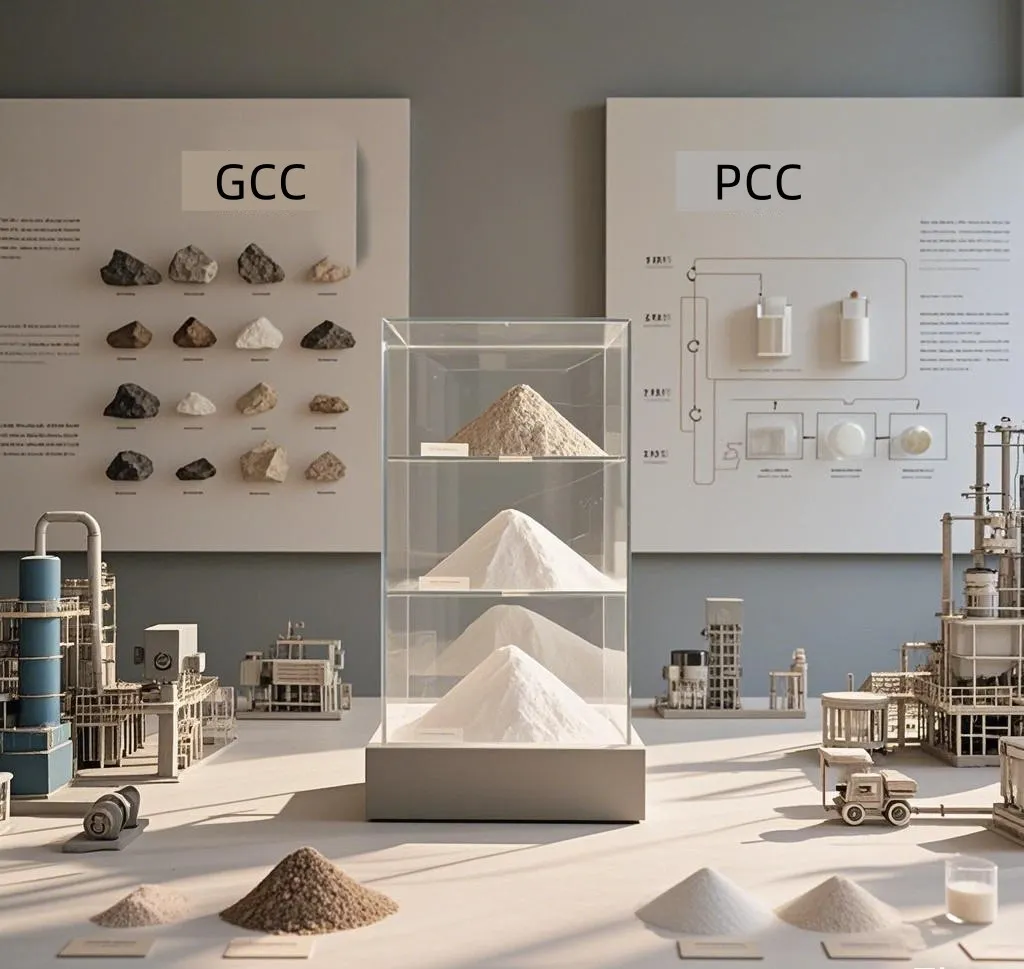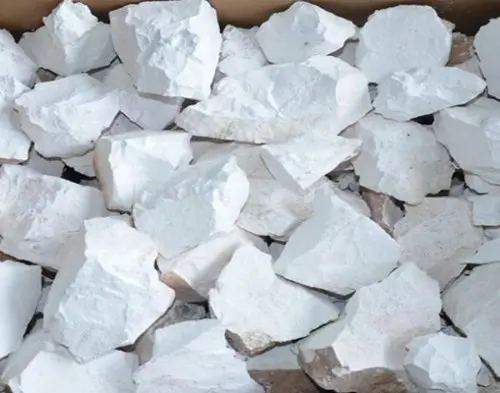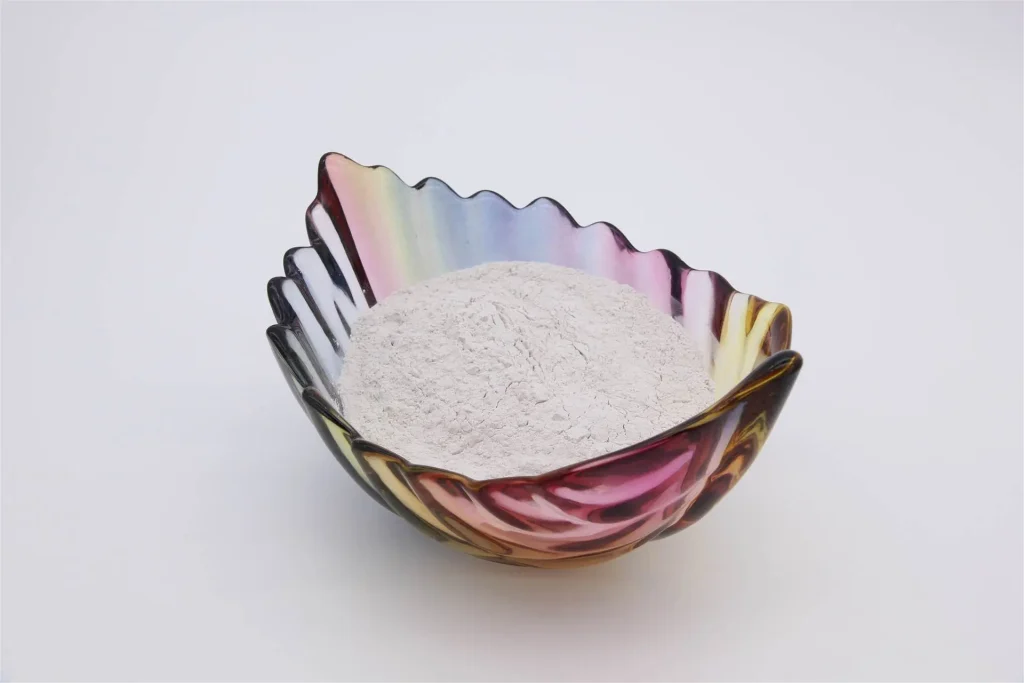Calcium carbonate is an important and widely used inorganic salt. According to different processing methods, there are wo kinds of it: GCC and PCC. It is the most widely used powder filler in industries such as plastics, rubber, and papermaking. Ground calcium carbonate, also known as GCC, is produced through physical processing. The raw materials are natural calcite, limestone, dolomite, chalk, shells, etc. Precipitated calcium carbonate, referred to as PCC, is produced through chemical processing. It not only helps reduce the raw material cost of plastic products but also improves certain properties of plastic materials. Research shows that different types of calcium carbonate can significantly enhance the performance of base plastics when used properly. However, clearly distinguishing between PCC and GCC has long been a challenge for many users. Below, we introduce the differences between the two from 17 different angles.

01 Production method
GCC is mainly made from natural minerals such as calcite, marble, limestone, chalk, and white marble. It is a powdered material obtained through mechanical grinding.
PCC is mainly produced from limestone, and is a powdered material obtained through calcination, digestion, carbonization, dehydration, drying, and classification.

02 Bulk density
The difference in bulk density is the most obvious distinction between GCC and PCC.
The bulk density of GCC is relatively high, generally 0.8–1.3 g/cm³;
The bulk density of PCC is relatively low, generally 0.5–0.7 g/cm³. Some nano calcium carbonate products can even have a bulk density as low as about 0.28 g/cm³.
03 Oil absorption value
Due to its large particles, smooth surface, and small specific surface area, GCC has a lower oil absorption value, generally 40–60 mL/100g;
PCC, with finer particles, a rough surface, and a larger specific surface area, has a higher oil absorption value, generally 60–90 mL/100g.

04 Whiteness
Due to the relatively high amount of impurities in GCC, the whiteness of the product is generally 89%–93%, with a few products reaching up to 95%;
PCC products have higher purity, so their whiteness is generally 92%–95%, with some products reaching 96%–97%.

05 Moisture content
The moisture content of GCC products is generally 0.2%–0.3%, which is relatively low and stable. Some high-end products can even reach as low as 0.1%;
Ordinary PCC products typically have a moisture content of 0.3%–0.8%, which can fluctuate and is less stable.
06 Particle shape
The powder characteristics of GCC include: irregular particle shapes, angular particles, rough surfaces, significant particle size variation, wide particle size distribution, and larger particle sizes. Crushing and refining do not change the crystal form of GCC. Generally, calcite-based GCC is hexagonal, while marble-based GCC is cubic. It is mainly determined by the source material. PCC powder features regular particle shapes and can be considered monodisperse powder, with a narrow particle size distribution. Based on particle shape, PCC can be classified into spindle, cubic, needle-shaped, chain, spherical, flake, and rhombic forms.
Spindle-shaped calcium carbonate: average long axis size of 5–12 μm, short axis 1–3 μm. Cubic calcium carbonate: average particle size 0.02–0.1 μm. Needle-shaped calcium carbonate: average particle size 0.01–0.1 μm, with an aspect ratio of 5–100. Chain calcium carbonate: average particle size 0.01–0.1μm, aspect ratio 10–50. Spherical calcium carbonate: average particle size 0.03–0.05 μm. Flake calcium carbonate: average particle size 1–3 μm.

07 Taste
PCC has a lime-like taste due to incomplete reaction of calcium oxide. When used as a filler in foods like biscuits, it can produce a choking or irritating taste.
GCC, by contrast, does not have this taste.
08 Particle size
The particle size range of GCC products is 0.5–45 μm. Based on average particle size (d), the categoriztion is as follows:
• Coarsely ground calcium carbonate: d > 3 μm
• Finely ground calcium carbonate: d = 1–3 μm
• Ultrafine calcium carbonate: d = 0.5–1 μm
09 Sedimentation volume
Sedimentation volume refers to the volume of a unit mass of calcium carbonate. The method is to shake it in 100 mL of water and left to stand for 3 hours.
A larger sedimentation volume indicates smaller particle size, lower density, and a higher product grade.
GCC: 1.1–1.4 mL/g
PCC: 2.4–2.8 mL/g
Nano PCC: 3.0–4.0 mL/g
Epic Powder

Thank you for reading this article on the differences between GCC and Precipitated PCC. As a leader in the powder technology field, Epic Powder Machinery provides efficient and innovative jet mills and related equipment to clients around the world.
Whether you are looking to enhance product performance or optimize production costs, we offer the most suitable solutions for your needs.
If you have any questions about the production and application of calcium carbonate powders, please feel free to contact us.
(To Be Continued in Part 2…)